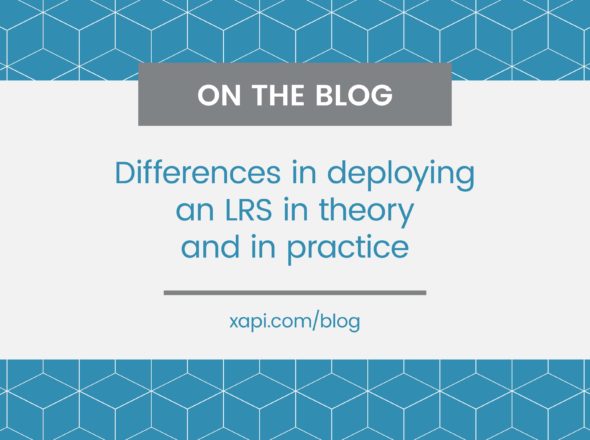 Today we had a discussion centered around the creation of statements corresponding to the actions that a client likes to capture for a live event. One of the actions they consider important is “raising a hand”. This is also an action that is common in online meetings, webinars, etc. because it is easily symbolized in an application’s interface. Our discussion started with the desire to create a verb for “raised hand,” but is that really the verb we need? (Clearly not, or I wouldn’t be writing this blog post.)
Today we had a discussion centered around the creation of statements corresponding to the actions that a client likes to capture for a live event. One of the actions they consider important is “raising a hand”. This is also an action that is common in online meetings, webinars, etc. because it is easily symbolized in an application’s interface. Our discussion started with the desire to create a verb for “raised hand,” but is that really the verb we need? (Clearly not, or I wouldn’t be writing this blog post.)
While the actual action of the student in this case is that they raise their hand, the physical raising of the hand isn’t what matters. We need to instead look at the essence of the action. To get to the essence of the action we need to consider what the physical human action is meant to portray and what we are really interested in.
In this example, we don’t really care that the person flexed their muscles and extended their arm upwards orthogonally to the ground. Instead, we care that the actor raised their hand as a physical indication of another action. In particular, they are trying to request attention or are responding to a question. In other words, students in a class will raise their hand to get the attention of a teacher to ask a question. The action of raising their hand is secondary to the action of requesting attention. We don’t care how they requested the attention, the pertinent information is that they did. So the verb we seek is actually “requested attention” rather than “raised hand.”
Adjusting our verb choice in this case not only gave us a more expressive statement, but it also allowed us to disambiguate the statement. Raising a hand in a class is a way to request attention, but it can also signify a response to a question. For instance speakers will often take a straw poll of their audience. The speaker asks the audience to raise their hand to signify that they should be counted as part of the result. Again, the actor’s physical action in this case is to raise their hand, but we aren’t interested in their physical ability. Instead, the speaker is interested in having an efficient means to tally inclusion in a set.
The disambiguation is important for another reason—just because the physical raising of a hand isn’t interesting to us for our purposes this time, it could be interesting in other situations. For instance, a physical therapist may assess a patient recovering from a shoulder injury by requesting they raise their hand. The physical range of motion of the shoulder isn’t signifying something else, it is the essence of the action we wish to capture. “Patient raised hand (really their arm but who is counting?) 88 degrees” is the most expressive form of the action for this experience.
In our discussion, we used a similar exercise to examine what was originally the concept of “applause.” Similar to raising a hand, clapping is a physical action that can be captured in a statement, but for our client’s purpose the physical action of rhythmically putting hands together to make a percussive sound wasn’t interesting. The part that was interesting is that “applause” signifies agreement with or appreciation of the speaker. In this case an existing “liked” verb was sufficient, though I could see a desire to differentiate that from other uses in a web context. Just as with the “raised hand” example, “clapped” could be an interesting verb in some instances. A pediatrician might be assessing the development of a baby’s gross motor skills resulting in a statement capturing whether or not the child could physically clap their hands.
Naturally, once we had decided on our new verb choices we checked the Registry for appropriate terms. For what was originally “raised hand” we ended up coining, http://id.tincanapi.com/verb/requested-attention, as a new verb more closely identifying what we desired to record.
Flexibility inherent in the xAPI Statement structure makes it possible to expressively capture learning experiences like no standard has before. This flexibility also means that to craft the best statements we often need to think beyond the simplest translation of an experience and reflect on the essence of the experience to capture the moments that we are most interested in. We need to ask ourselves not only what the actor is doing, but why.
For more information about the Verb object as a part of a xAPI Statement structure, check out the “Deep Dive: Verbs” post.


